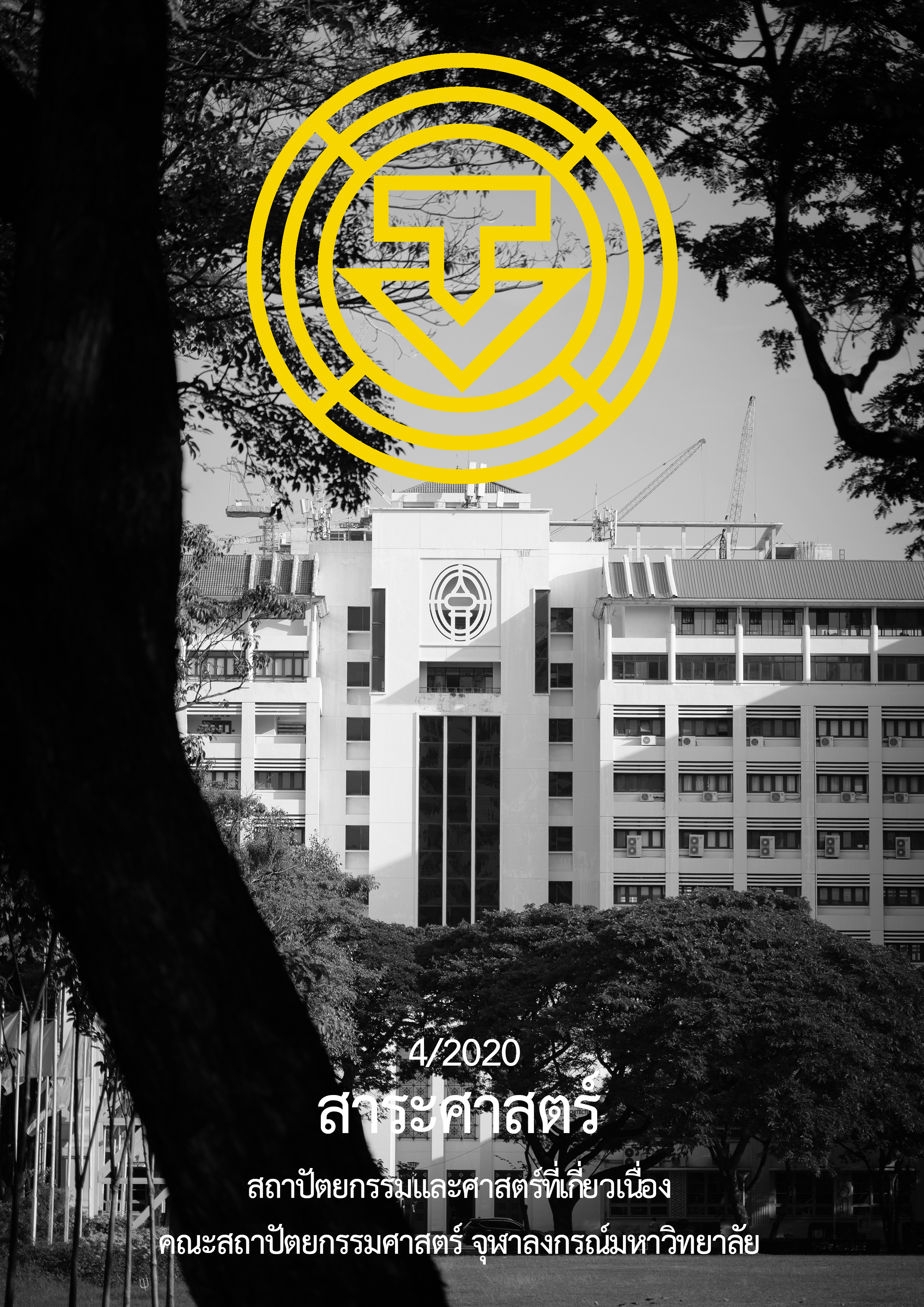Development Guidelines of the Area under the Express Way for Public Benefit, Case Study: Chalongrach Express Way
Main Article Content
Abstract
Public space is one of the essential components of urban space. If it is planned and designed appropriately, it will produce useful uses for the urban population, increase the safety and economic lead to improving the quality of life of the community around the area under the expressway. But nowadays, Bangkok still faces the problem of inadequate public spaces for services to the people.Therefore began to develop an area under the expressway to be the area for public activities that there are still many areas under the expressways in Bangkok that are not used. This study aims to find ways to develop the area utilization under Chalong Rat Expressway. Rama 9 Swamp area for public benefits to the surrounding communities, including 1) To study the policies, work plans of the Expressway Authority of Thailand and theories related to the development of public space 2) To study and analyze the physical condition of the study area under Chalong Rat Expressway. 3) To study development attitudes and needs of the communities surrounding the study area 4) To suggest suggestions for improvements in the area under the expressway in accordance with the needs of the community and the policy of the Expressway. The educational process starts from reviewing related policies and literature. Data collection from the survey of the area under the expressway The questionnaire was collected on 215 households and using descriptive statistical methods to describe the characteristics of the data for describe the nature of the information And inferential statistics to study the relationship of population characteristic variables with development activities under the expressway and the need for facilities. From the study, it was found that most of the sample groups in the community had a need for leisure activities as exercise and rest in a similar calm manner, requiring exercise the most, accounting for 58.0 percent, followed by a need for walking activities, accounting for 46.0 percent and sitting and resting, accounting for 42.8 percent In terms of need for facilities, most respondents had the most needs for safety and convenience during their activities, such as the most lighting was 62.8 percent, followed by bathrooms, 60.9 percent, and gardens, 40.9 percent. So The needs of different areas were analyzed from the relationship with demographic characteristics such as sex, age, occupation, land ownership situation, residential area and length of residence is different. The suggestion of the study found that Relevant agencies should have a policy and plan of action to improve and develop the area.
Article Details
References
การทางพิเศษแห่งประเทศไทย. (2561). การพัฒนาพื้นที่ในเขตทางพิเศษ. สืบค้นเมื่อ 27 มิถุนายน 2563, จาก www.exat.co.th/index.php/th/กรรมสิทธิ์ที่ดิน/การพัฒนาพื้นที่ในเขตทางพิเศษ.html
ชวิตรา ตันติมาลา. (2560). พื้นที่สาธารณะและการผลิตพื้นที่: ความหมายใหม่ของความสัมพันธ์ทางสังคม. วารสารบรรณศาสตร์ มศว, 10(1), 92–103. สืบค้นเมื่อ 12 กรกฎาคม 2563, จาก https://ejournals.swu.ac.th/index.php/Jlis
ณัฐพงศ์ พรมไทร. (2549). การวางแผนพัฒนาพื้นที่นันทนาการในแขวงดินแดงและแขวงห้วยขวาง กรุงเทพมหานคร. (วิทยานิพนธ์ปริญญามหาบัณฑิต, จุฬาลงกรณ์มหาวิทยาลัย).
นิธิ ลิศนันท์. (2559). แนวทางที่ส่งเสริมศักยภาพของพื้นที่สาธารณะในเมืองเก่านครราชสีมา. วารสารวิชาการคณะสถาปัตยกรรมศาสตร์ มหาวิทยาลัยขอนแก่น, 15(1), 131–152.
นิรมล กุลศรีสมบัติ และ ยุวดี ศิริ. (2552). พื้นที่ทิ้งร้างกับการฟื้นฟูเมือง: กรณีพื้นที่ใต้ทางพิเศษยกระดับในกรุงเทพมหานคร. สืบค้นเมื่อ 11 กรกฎาคม 2563, จาก http://www.arch.chula.ac.th/journal/files/article/4MDGxPvwEYSun105252.pdf
ปาจรีย์ ประเสริฐ. (2546). แนวทางการพัฒนาพื้นที่ใต้ทางด่วนในเขตกรุงเทพมหานคร. (วิทยานิพนธ์ปริญญามหาบัณฑิต, จุฬาลงกรณ์มหาวิทยาลัย).
ศุภชัย ชัยจันทร์ และ ณรงพน ไล่ประกอบทรัพย์. (2559). แนวคิดสาธารณะของพื้นที่สาธารณะในเมือง.วารสารวิชาการคณะสถาปัตยกรรมศาสตร์ มหาวิทยาลัยขอนแก่น, 15(2), 71-83.
สำนักผังเมือง. (2559). โครงการศึกษาตัวแบบมาตรฐานที่ใช้ในการวิเคราะห์เพื่อวางผังเมืองรวม. สืบค้นเมื่อ 27 มิถุนายน 2563, จาก http://subsites.dpt.go.th/edocument/images/pdf/sd_urban/3_0006.pdf
Madanipour, Ali. (1996). Design of urban space: An inquiry into a socio-spatial process. Chichester:Wiley.
Arendt, H. (1998). The human condition. Chicago: The University of Chicago Press.
Carr, Stephen, Francis, Mark, Rivlin, Leanne G. & Stone, Andrew M. (1992). Public space. New York, NY: Cambridge University Press.
Goodsell, C.T. (2003). The concept of public space and its democratic manifestations. The American Review of Public Administration, 33(4), 361-383.
Habermas, Jürgen. (1992). The structural transformation of the public sphere: An inquiry into a category of bourgeois society. Cambridge: Polity Press.
Trancik, R. (1986). Finding lost space. New York: Van Nostrand Reinhold.


